An Art-Filled Block on West 100th Street
A local artist’s presence has created community — and drama — on an ordinary side street
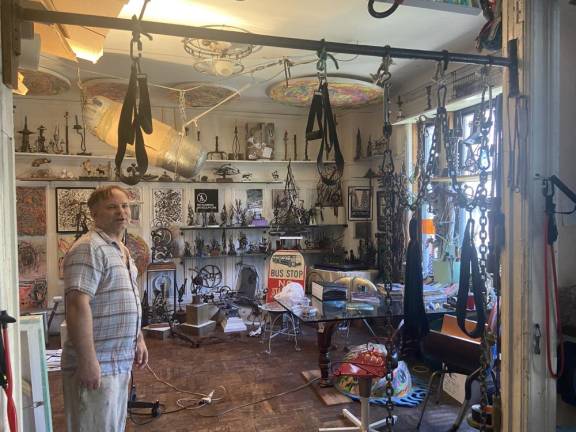
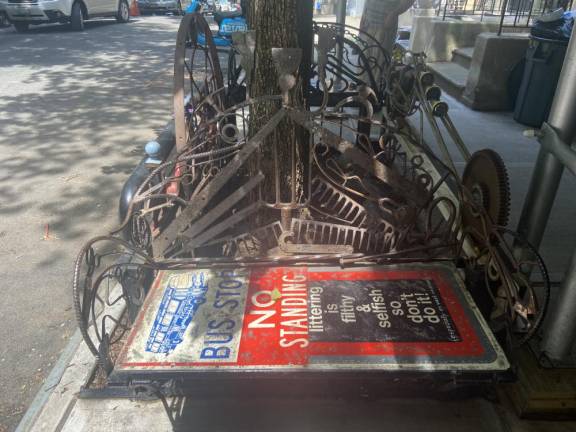
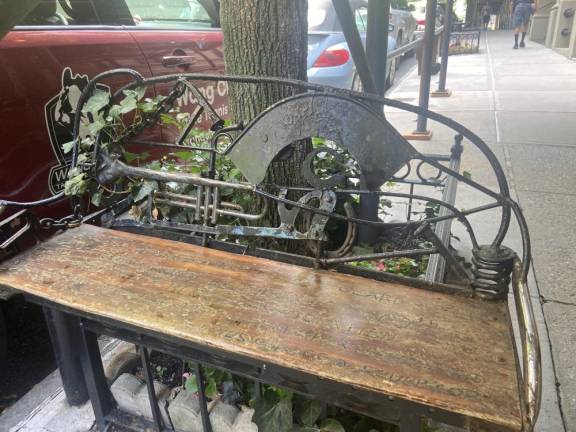
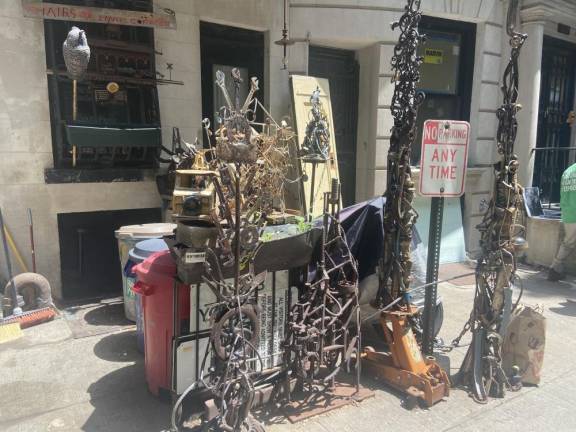
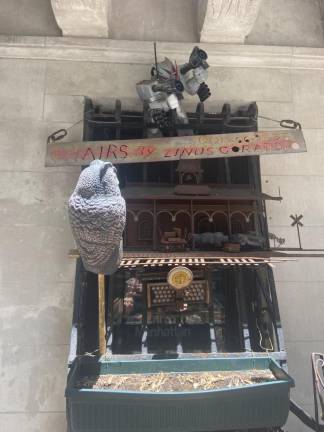
The whole block knows his name. New York City artist Linus Coraggio has lived on the same Upper West Side block — on 100th Street between West End and Riverside — since the 1960s and for decades has taken on the role of a local repairman, with a twist.
To many in the art world, Coraggio is known for his contributions to the abstract street art scene on the Lower East Side during the 1980s. Notably, Coraggio founded the “Rivington School,” which was not a school, but a sculpture group that transformed vacant lots into junk metal workshops and sculpture gardens in the 1980s.
Coraggio also managed an abandoned gas station at Avenue B and Second Street, which he turned into a junk metal studio where artists incessantly added their own work to the ever-growing sculpture yard.
“It was quite an interesting time period to have that level of autonomy and be able to get away with that kind of public installation of art,” Coraggio said, reflecting on the Rivington School’s creations and “The Gas Station.”
The Gas Station was eventually demolished along with a sweep of gentrification in the 1990s which saw much of the group’s work destroyed, though remnants of Coraggio’s work still remain on the Lower East Side today.
Pieces for His Neighbors
While Coraggio’s most well-known work may come from his time with the Rivington School or on the Lower East Side, some of his most appreciated work are pieces he has made for his neighbors. Since his first art installation on the block in the 1990s, he’s slowly transformed his West 100th Street into one of the most unique, art-filled blocks in New York City, one piece of metal at a time.
In the 1980s, the block on 100th street between West End and Riverside got its first trees installed, with what Coraggio described as “cookie cutter tree guards” that gradually fell apart over the next 20 years.
In the late 1990’s, Coraggio, who already had one of his sculptures on display on the block, was approached by some of his neighbors on the Block Association who asked if he could rebuild the tree guards that were falling apart.
“So I did!” Coraggio said. “And I incorporated some of my own artwork, my metal work, into it.”
Coraggio continued to repair a string of broken tree guards on the block using metal scraps and incorporating items like his old sewing machine and a typewriter. Coraggio then decided to use his furniture making skills to weld a bench.
“I thought, ‘why not try a bench?’ because New York City has zero public amenities as far as seating goes and there are a lot of elderly people on the block who like to take a rest as they’re coming and going,” Coraggio said.
“I thought it would be a neat dynamic to have a place to sit down and generate some conversation among residents and visitors to the block,” he added.
Intricate Metal Work
Residents of the block often stop to read a book on one of his benches or simply pause to admire the intricate metal work on his tree guards.
“His artwork makes the block historic,” said two of Coraggio’s neighbors, who gave their names only as Donald and Prince. “Linus makes the block unique.”
Another resident was proud to claim Coraggio as one of the block’s own.
“The presence of these one of a kind signature sculptures made from so many found objects reminds me of the Upper West Side long ago, when more artists and creatives lived here and blocks were reflective of that,” said 100th Street resident Bianca. “I appreciate that Linus keeps this block quirky, different and evolving ... there is no other block like 100th street.”
While much of Coraggio’s work is abstract, a few of his pieces on the block have hidden messages. A tree guard in front of 280 Riverside Drive shows an imitation gun welded into a peace sign as an antiwar message. On another bench, Coraggio included a tribute to a Holocaust survivor who lives in the neighborhood by welding her Kindertransport number into one of his tree guards.
To craft the benches and tree guards, Coraggio finds material in vacant lots or building sites, and uses an electric welding machine called an MIG welder.
“The material I use is all recycled, that’s part of my mission,” Coraggio said. “It’s a way of including objects from the past that have some resonance or significance.”
Critics on the Block
While Coraggio’s work has been well received by most, he has faced some challenges including being threatened with eviction if he didn’t remove one of his benches from outside his building.
“I had to get the block association to explain that it was under their approval but that still didn’t make a difference and it was taken out from in front of my building and moved to [another] building,” he said.
Coraggio had also recently installed two more tree guards outside of 280 Riverside Drive which were suddenly removed in the middle of the night and transferred into a storage room in the building’s basement last week.
Whether the landlords on his block today, or the landlord who replaced the “Gas Station” with a Duane Reade in the 1990s, there will always be critics of his art, Coraggio said. “Haters” of his work, however, are undoubtedly the minority, he joked.
“I’ve spent numerous hours on the street, moving my car or maybe I’ll stand around one of the pieces I’ve done, and people will stop to take pictures and talk about it.”
A Family of Artists
Creative genes have always run in the family; Coraggio’s father was an avant-garde composer, and his mother a poet.
Coraggio recalled that what first sparked his interest in used metals was traveling with his mother to different factories in the Rust Belt where she detailed the history of abandoned metal structures for a column in the Village Voice.
Coraggio also recalled one of the first sculptures he ever made, a 30 inch by 20 inch construction of over 3000 toothpicks when he was ten years old.
“When I was done, I asked my mother what I had made and she said, ‘that’s a sculpture!’ so I asked her how to spell [sculpture] and I made a name plate for it.”